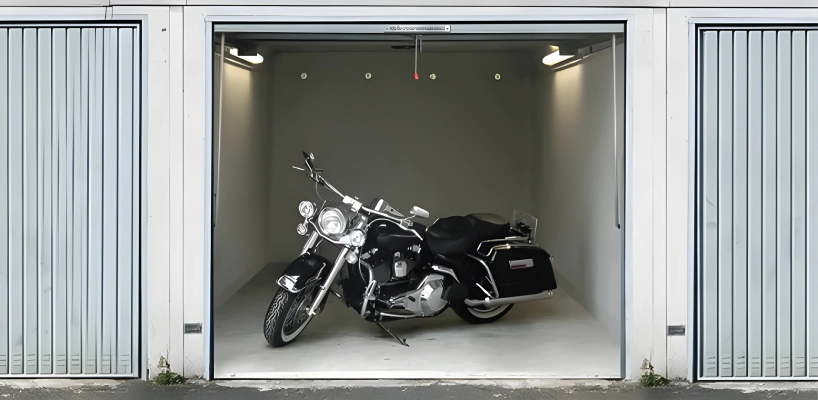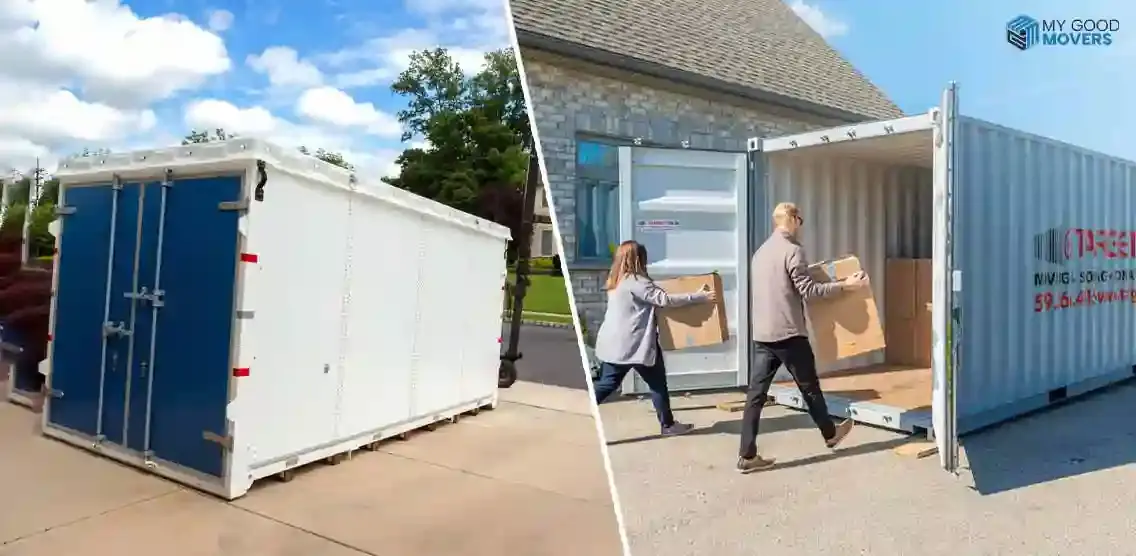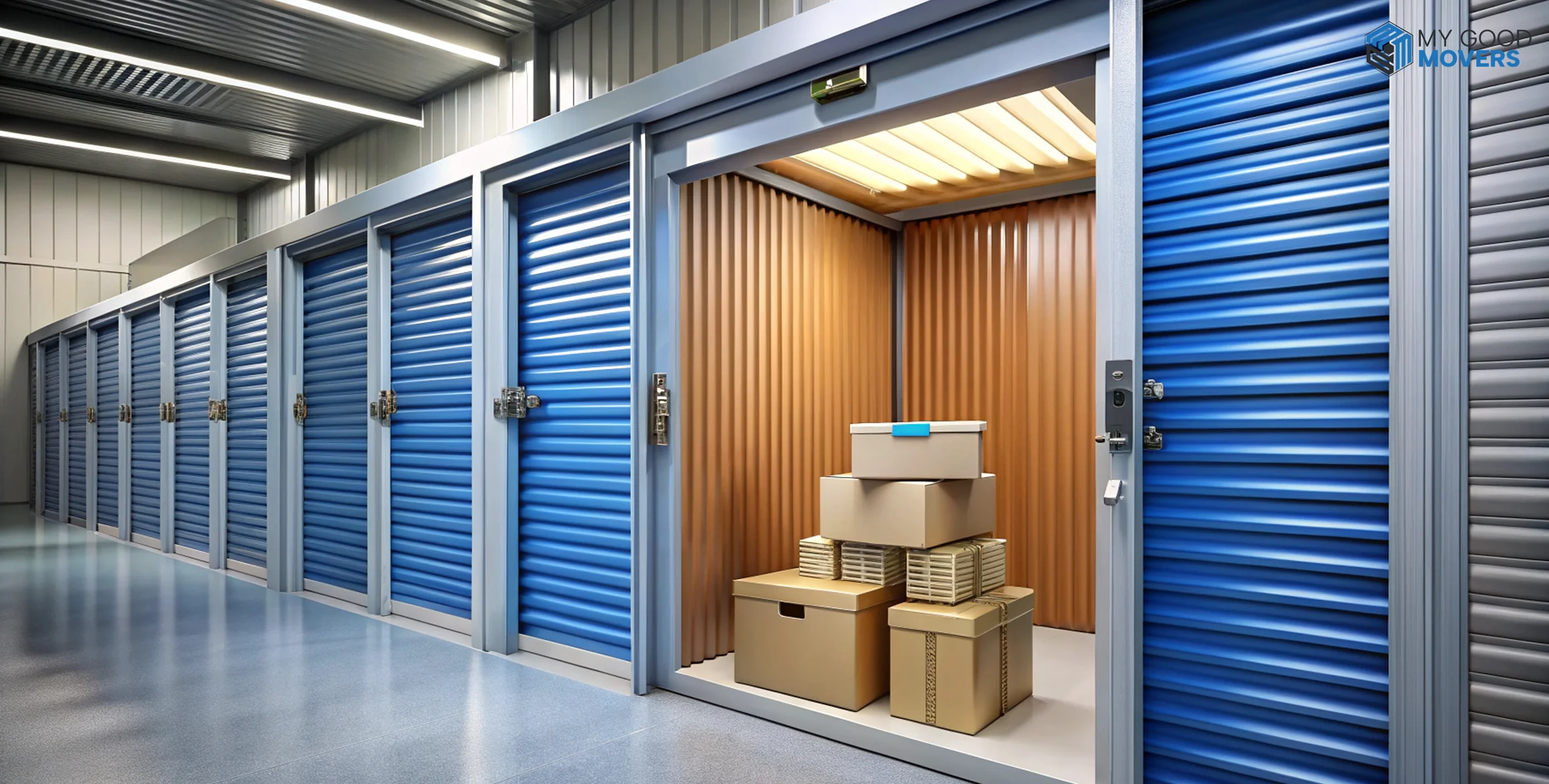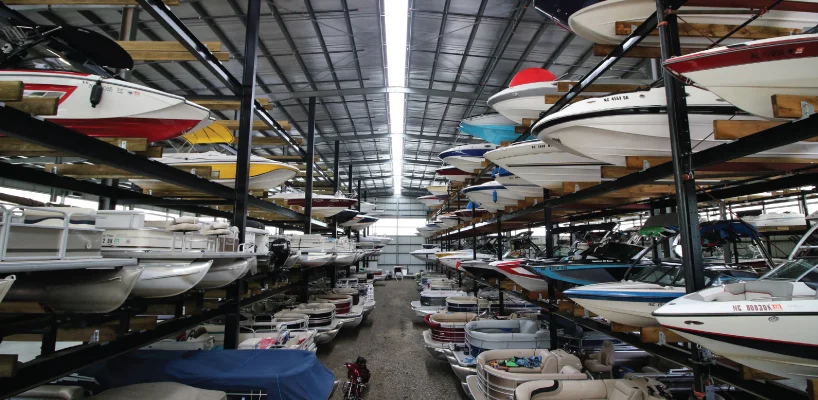Did you know that motorcycles are one of the most versatile and beloved modes of transportation worldwide? With their sleek designs and adventurous spirit, they capture the hearts of enthusiasts everywhere.
Despite their smaller size than cars, they demand significant storage space, with a minimum requirement of 50 square feet at home and even more for larger models. Proper storage protocol is crucial to avoid mishaps, whether storing overnight or for the winter.
Whether you are an experienced rider or a prospective owner, adhering to proper motorcycle storage procedures is essential.
In this blog, we will talk about some essential tips and tricks to ensure the safety of your motorcycle, regardless of the space limitations in your storage unit.
How to Store a Motorcycle in a Storage Unit?
Here are the steps for properly storing a motorcycle in a storage unit:
| Step | Description |
|---|---|
| Clean Your Motorcycle | Thoroughly wash and dry your motorcycle to remove dirt or grime. |
| Prepare Your Motorcycle | Lubricate the chain, check tyre pressure, and add a fuel stabilizer to the tank to avoid deterioration. |
| Choose a Suitable Storage Unit | Select a climate-controlled storage unit to maintain stable temperature and humidity levels, which helps prevent moisture damage. |
| Lift Your Motorcycle | Use stands or paddock stands to lift your motorcycle off the ground. This prevents tyres from flat spots and ensures even weight distribution. |
| Cover Your Motorcycle | Protect your motorcycle from dust and moisture by covering it with a breathable, moisture-resistant cover. |
| Disconnect the Battery | Disconnect the battery to prevent drain or use a battery tender to keep it charged during storage. |
| Regular Inspections | Visit the storage unit periodically to inspect your motorcycle for any signs of damage. |
| Pre-Ride Check | Before hitting the road again, quickly inspect your motorcycle and start it up to ensure everything is in working order. |

Constructing a DIY motorcycle storage shed offers a cost-effective solution for protecting your bike from the elements, ensuring security, and providing easy access whenever you're ready to hit the road.
How Much Does It Cost to Store a Motorcycle in a Storage Unit?
The cost of storing a motorcycle in a storage unit can vary depending on several variables, including the location, size of the storage unit, amenities offered, and duration of storage.
Here is the estimated monthly cost of storing a motorcycle in a storage unit:
| Type of Storage Unit | Estimated Monthly Cost Range |
|---|---|
| Standard (non-climate-controlled) | $30 - $80 |
| Climate-Controlled | $50 - $100 or more |
| Premium (with additional amenities) | $80 - $150 or more |
(Note: Please note that these are rough estimates, and actual prices may vary depending on location, facility features, and other factors.)
Choosing the Right Storage Location
When selecting the ideal storage space for your motorcycle, it is crucial to consider several factors to maintain its safety and condition. Key considerations for choosing the appropriate storage space include:
- Indoor vs. Outdoor Options: When deciding between indoor motorcycle storage for better protection and outdoor motorcycle storage for accessibility, consider the risk of weather damage and theft.
- Climate Control: Maintain proper temperature and humidity levels to prevent damage from extreme conditions, utilizing climate-controlled indoor spaces or supplementary devices.
- Security Measures: Implement strict security measures such as locks, alarms, and surveillance for indoor storage, and invest in covers, locks, and anchors for outdoor storage to deter theft and vandalism.

Storing your motorcycle in the garage can help protect it from weather damage and theft, ensuring it stays in top condition for your next ride.
How to Prepare Your Motorcycle for Storage?
Preparing your motorcycle for storage is essential to ensure it remains in good condition while not in use. Here's a step-by-step guide on how to prepare your motorcycle for storage:
- Clean Thoroughly: Clean your motorcycle thoroughly, removing dirt, grime, or debris. Pay close attention to areas prone to corrosion, such as the frame, exhaust, and engine.
- Change Fluids: Change the oil and filter to prevent contaminants from sitting in the engine for an extended period.
- Fuel System: Add a fuel stabilizer to the gas tank and fill it up to prevent moisture buildup and corrosion. Run the engine for a few minutes to ensure the stabilizer circulates throughout the fuel system.
- Battery Maintenance: If storing for an extended period, disconnect the battery or use a battery tender to maintain its charge. Clean the battery terminals properly and apply a protective coating to avoid corrosion.
- Tyre Care: Inflate the tyres to the recommended pressure, and consider using a motorcycle stand to prevent flat spots. Rotate the tyres periodically to distribute weight evenly.
- Protective Measures: Apply a corrosion inhibitor or wax to metal surfaces to protect against rust. Cover the motorcycle with a breathable, weatherproof cover to shield it from dust, humidity, and UV rays.
- Storage Location: Choose a dry, well-ventilated, and preferably climate-controlled storage location to minimize temperature fluctuations.
Learn More: Best Packing and Storage Moving Companies
Dos and Don’ts of Motorcycle Storage
Properly storing your motorcycle during periods of inactivity is important for maintaining its performance and condition. Here are some integral dos and don'ts to keep in mind:
Dos:
| Dos | Description |
|---|---|
| Refresh fluids and change oil | Before storing your motorcycle, ensure that you top up or replace all fluids, including engine oil, coolant, and brake fluid. |
| Wax and lubricate the chain | Apply a coat of wax to the motorcycle's painted surfaces to protect them from dust, moisture, and other environmental hazards. |
| Invest in a quality cover | Shield your motorcycle from dust, moisture, and UV rays by investing in a high-quality motorcycle cover. |
| Explore local storage options | Consider secure, climate-controlled facilities for safe and accessible storage. |
Don’ts:
| Don'ts | Recommendations |
|---|---|
| Don't start the bike weekly | Avoid starting the engine frequently, leading to moisture buildup and corrosion. |
| Don't drain the tank | Keep the fuel tank full or use a stabilizer to prevent moisture buildup and corrosion. |
| Don't remove the battery | Keep the battery connected to maintain its charge unless using a battery tender. |
| Don't store a dirty bike | Clean the motorcycle thoroughly before storage to prevent corrosion and damage. |
| Don't overinflate tyres | Following the manufacturer's recommendations, maintain proper tyre pressure to avoid premature wear and reduced grip. |
Essential Equipment and Supplies for Motorcycle Storage
When properly storing your motorcycle, having the right equipment and supplies can make all the difference. Here's a list of the essential items you will need:
| Equipment/Supplies | Purpose/Function |
|---|---|
| Motorcycle Cover | Protects from dust, moisture, and UV rays. |
| Security Measures | Disc locks, cable locks, alarms, or GPS trackers. |
| Battery Tender | Maintains battery charge during storage. |
| Fuel Stabilizer | Prevents fuel breakdown and engine issues. |
| Tire Stands or Wheel Chocks | Prevents flat spots on tyres. |
| Storage Lift or Stand | Saves space and protects tyres. |
| Cleaning Supplies | Detergent, microfiber cloths, and wax for bike maintenance. |
| Desiccant Packs | Absorbs moisture to prevent rust. |
| Oil and Fluids | Fresh fluids prevent corrosion. |
| Tool Kit | Basic tools for maintenance and repairs. |

To find trustworthy motorcycle storage companies near your location, just type “motorcycle storage location near me” into Google
Long-Term Storage Tips for Motorcycle Storage
Long-Term Storage Tips for Motorcycle Storage:
- Clean and Protect: Clean your motorcycle before storing it. Remove any dirt and grime that can cause corrosion during storage.
- Fluid Maintenance: Add a fuel stabilizer to the gas tank to prevent fuel degradation and engine issues. Ensure coolant, brake fluid, and other fluids are topped off to prevent corrosion and maintain performance.
- Battery Care: Use a battery tender or trickle charger to maintain the battery's charge and prolong its lifespan. Also, store the battery in a cool, dry place away from direct sunlight.
- Prepare tyres: Use tyre stands or wheel chocks to keep tyres off the ground and prevent flat spots.
- Cover and Protect: Use a breathable motorcycle cover to shield your bike from dust and UV rays.
- Monitor Environment: Monitor humidity levels and use desiccant packs or moisture absorbers to prevent rust and corrosion.
- Regular Checks: Periodically inspect your motorcycle for deterioration signs and promptly address any issues. Start the engine occasionally and let it run for a few minutes to circulate fluids and prevent seizing.
- Maintain Security: Securely store your motorcycle with locks, alarms, or GPS trackers to deter theft.
Looking for the best motorcycle storage unit? Check out our Storage Guide.



































 (239) 799–6077
(239) 799–6077